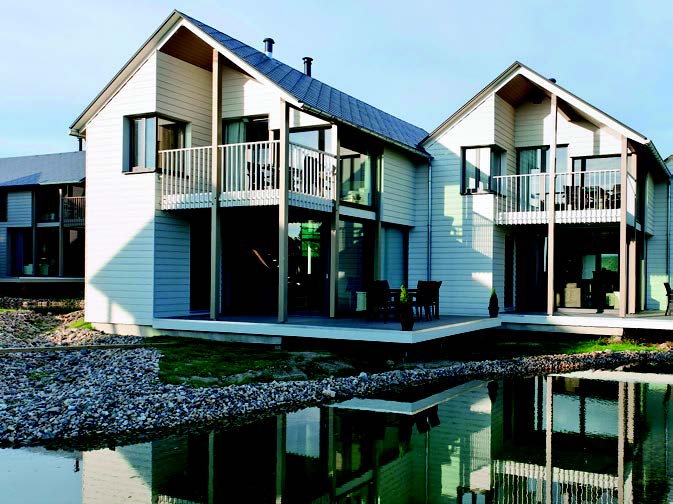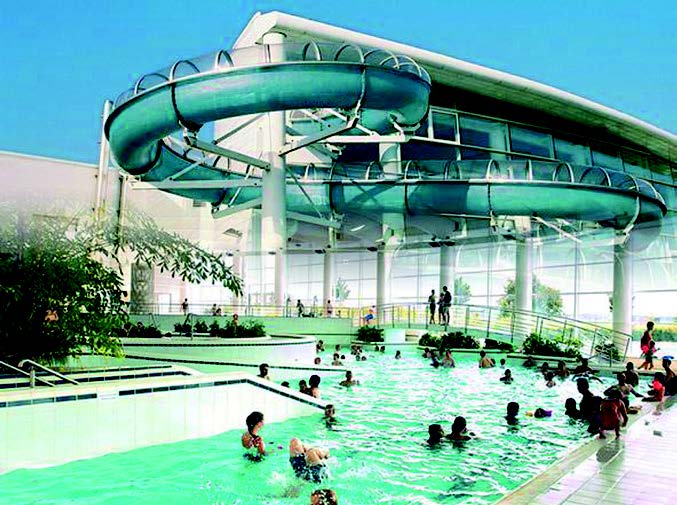- Daily & Weekly newsletters
- Buy & download The Bulletin
- Comment on our articles
The Lakes escape
The Lacs de l’Eau d’Heure is a unique site combining a hydro-electric dam with adventurous and green tourism.
The Lacs de l’Eau d’Heure retain an air of mystery. They may be Wallonia’s top tourist destination and the largest watersports centre in Belgium, but there is an enchanting calm and beauty about the five stretches of water surrounded by green and wooded hills.
In a quiet corner of Hainaut, south of Charleroi and just north of the French border, the lakes lie in the little-known Sambre and Meuse region, a picturesque area full of castles, abbeys, farms and rolling countryside.
It was 30 years ago that a dam and hydro-electric station was built to maintain the level of the River Sambre. The subsequent creation of five lakes first attracted locals keen to sail, fish and enjoy the secluded waterside spot. Since the 1980s it has slowly been expanding with investment from the Wallonia region and the European Union. Now a major economic and tourist site, it is a model for sustainable tourism that is picking up prestigious environmental awards.

Day-trippers, holidaymakers, schools and businesses are all catered for in addition to locals. Holidays are centred on watersports, nature and gastronomy. The lakes also provide employment, with 300 people working directly for the complex. They are run by a nonprofit organisation that collaborates with private partners. This has led to the construction of three holiday villages, Dutch-, French- and Belgian-owned. Accommodation is available for all budgets and last-minute booking is possible outside school holidays.
Open all year round – although some activities are restricted to the spring and summer – the challenge is to attract as wide a public as possible, says Anne Copin, who is responsible for the marketing of the site. “We now target daytrippers and holidaymakers, plus businesses through seminars and activities such as team-building.” She points out that it is unusual in being both a technical (electricity production) and leisure site. “But it has succeeded in reconciling tourism with the environment and we have received some international recognition for this.” On a more personal note “it is a beautiful place to work, a little bubble, an oasis,” she adds.
One reason for the lakes’ success is that there is space for everyone, professional and amateur. Watersports remain naturally the main draw, principally sailing, jet-skiing, kayaking, paddle-boarding, diving (to 40m), wakeboarding, waterskiing and windsurfing. Other sports include cycling, nature walks, fishing, Nordic walking and tree-top trails in the Natura Parc, which has the added attraction of ‘tree dating’ evenings two Fridays a month during the summer.

There are about 25 activities in total with more on the horizon as the location continues to diversify its interests. Major projects planned for 2013 are a nine-hole golf course and the renovation and expansion of the tropical swimming complex that attracts 120,000 holidaymakers and local families every year. ULM micro-light initiation will be available from the end of August at the Adeps centre. Next year also sees the completion of bike and equestrian parks.
Unique in Belgium is the popular Spin Cablepark, a 660m tow-can that pulls water-skiers, wakeboarders and the like. The boatless system is ideal for beginners. For families and children, the amphibious Red Crocodile complete with film and treasure hunt adventure is a fun ride from road to water.
Swimming in the freshwater lakes, with the only sandy beaches in Wallonia, draws visitors of all ages. They mainly head to the largest lake, Eau de la Plate Taille, where the reception centre and holiday villages are. There are defined zones for bathing as the water can be dangerous due to currents and variation in depth, and the latter has led to the construction of a raised beach and recreation area. Since last summer a beach pavilion on stilts gives a 360-degree view of the surrounding area. There is a second swimming area on the west bank of the lake, with a pool, terrace and beach for day tourists. The family relaxation area offers pétanque, beach volley, mini-golf and pedaloes.
The lakes’ symbol and a popular visitor spot is the panoramic tower that stands at 107m, and which is also undergoing renovation. Naturally, there is no shortage of wining and dining choices. There are 11 restaurants and snack bars, catering to all tastes and budgets, in addition to local establishments.
Information is readily available on tourist attractions within a 25km radius of the lakes. The nearby village of Walcourt rises above the surrounding countryside, topped by a basilica. Further south, the abbey of Chimay is famous for its trappist beer and cheese. And if you drive towards Beaumont, don’t miss the Biercée Distillery in a 16th-century farm. In Hainaut province, folklore activities are forever present and the beat of drums and flash of traditional costumes can be spotted in markets throughout summer months.
Facts and figures
- Eden Label 2010 for sustainable environment
- European Blue Flag for water quality
- 1 million visitors per year
- 1,800 beds available
- 200,000 nights in total by visitors in 2011
- 30km from Brussels South (Charleroi) Airport
www.lacsdeleaudheure.be
This article first appeared in the Summer 2012 edition of WAB Magazine









